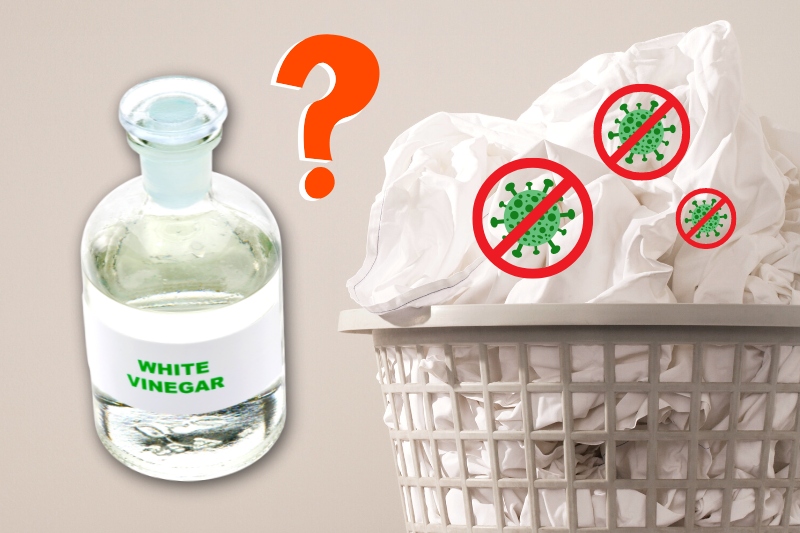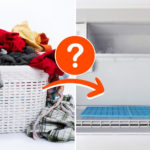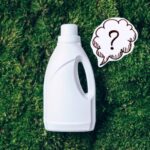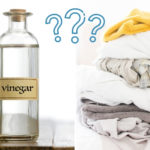When it comes to cleaning, vinegar serves a wide variety of purposes around the home.
It can also be used to remove odours from fabrics, break down leftover detergent residue and soften your laundry in place of fabric conditioner.
But does vinegar kill bacteria on clothes? In this post, we’ll provide the answer, plus some top tips for disinfecting laundry to kill germs.
Can Vinegar Disinfect Clothes?
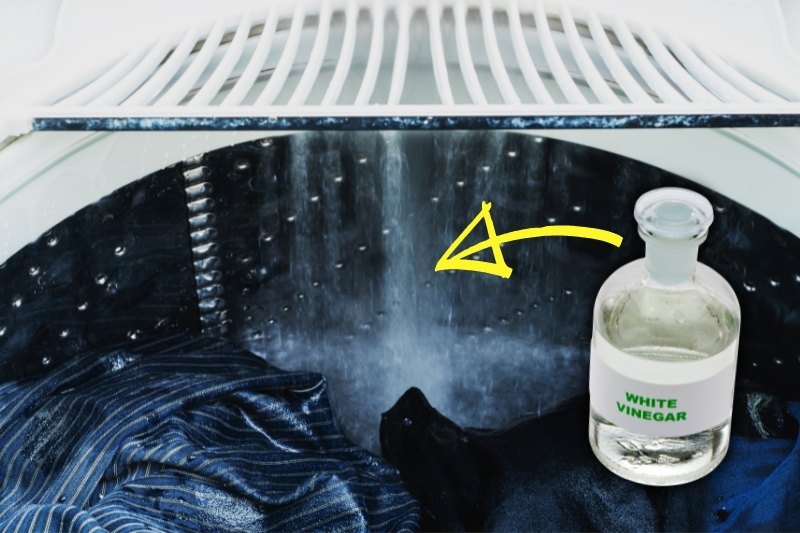
Strictly speaking, you can’t disinfect clothes with vinegar. This is because unlike 70% alcohol-based products and chlorine bleach, white vinegar hasn’t been proven to kill 99% of germs.
As such, though it is an effective natural cleaner, vinegar doesn’t qualify as a disinfectant.
With that said, standard white vinegar with 5% acetic acid can help protect against several harmful bacteria like E Coli and Salmonella.
White vinegar can also help to tackle dust mites and sweat-inducing bacteria. And some studies suggest that stronger 10% concentrations can kill the flu virus by destroying the cell walls.
However, most vinegar isn’t this potent and you can’t rely on it to prevent the spread of disease, as only chemical disinfectants have been proven to fully inactivate bacteria.
What’s the Best Way to Kill Bacteria on Clothes?
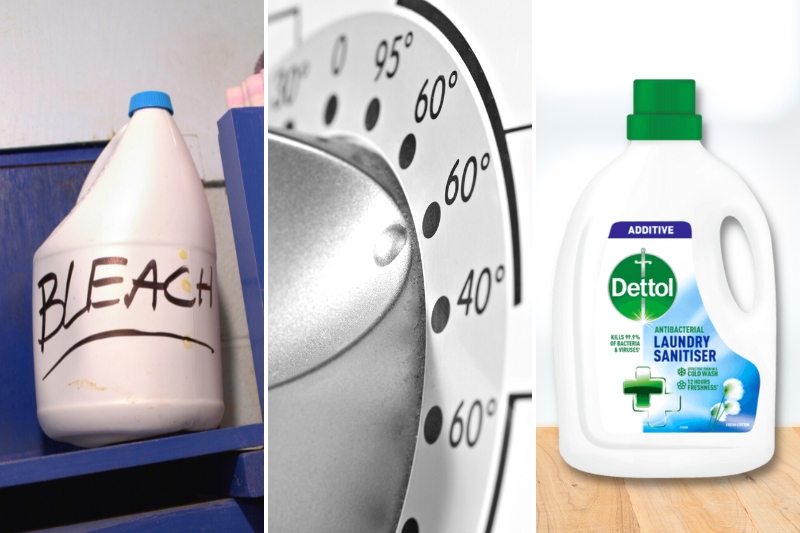
With that in mind, bleach remains one of the best ways to kill harmful bacteria on clothes, towels and sheets due to its unrivalled disinfectant properties.
Even when diluted in the wash, it can only be used on hardy white fabrics and they may need rewashing to prevent skin irritation. If you’re not sure how to use it, see our article on how to use bleach in your washing machine.
But if someone in your house is ill and you don’t want to fade or damage their coloured garments or bedding, what should you do?
The simple answer is to check the care label and opt for a long 60-90°C cycle if possible, as the hot water alone will kill the majority of germs.
If this isn’t possible due to the fabric – for example, delicate underwear or lycra workout clothes – don’t worry.
You can also boost the efficacy of a cooler cycle by adding two caps of Dettol Laundry Sanitiser to the conditioner compartment.
Or to aid the killing of viruses, pre-soak the garment in 2.5 litres of warm water with 1 cap of cleanser for 15 mins prior to the wash.
How to Kill Bacteria on Clothes Using Vinegar

Despite its lower-level germ-killing abilities, the upside to using vinegar when sanitising your laundry is that it won’t impact the fabric, strip coloured dyes or cause skin irritation.
It’s also more affordable than specialist laundry products and you can use it for a host of other tasks too.
So, if you want to give it a try, here’s how to use vinegar to kill bacteria on clothes…
Over time, excess soap residue from laundering can collect on your garments and they may start to smell stale. You’ll likely notice it on towels and other heavy items first.
Thankfully, vinegar can dissolve these deposits and help to kill odour-causing bacteria, soften fabric and restore absorbency.
To resolve detergent build-up, add ½ cup of white vinegar to the conditioner compartment per load or a full cup for bedding and towels as a preventative measure.
Or you can pre-soak affected items in neat vinegar before washing them to remove any existing residue.
Tip: don’t mix white vinegar (acid) and laundry detergent (alkaline) together during the initial wash cycle as they will cancel each other out and become much less effective cleansers.
Additionally, you can also use white vinegar to clean the machine itself. This way, the soap scum that is liable to gather in the drum won’t have a chance to deposit onto your clothes.
However, don’t do this too often as the acid in the vinegar can wear away at your washer’s metal components and rubber seal. As such, every 2-3 of months should be enough.
How Else Can You Disinfect Laundry Without Bleach?
Looking for more ways to kill bacteria on clothes without using bleach? You can also try the following products:
Hydrogen peroxide
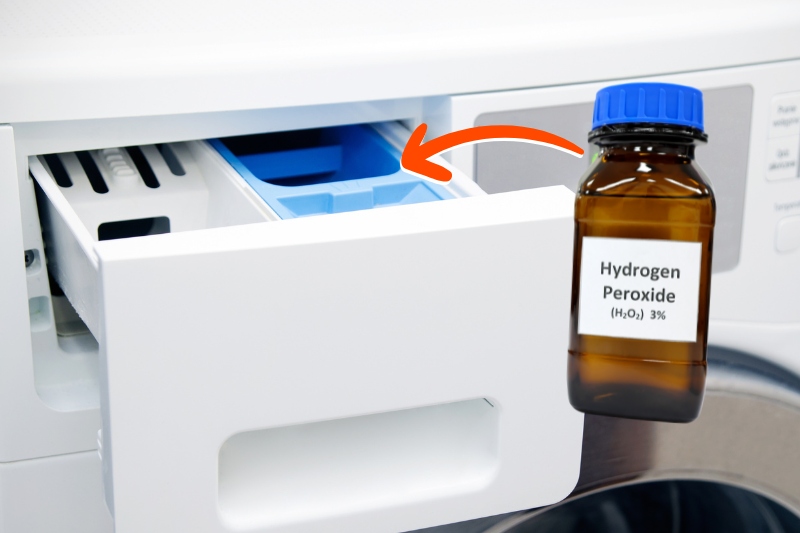
Suitable for whites and light-coloured pastels only, 3% hydrogen peroxide is a great germ killer.
Simply add 1 cup to the dispenser drawer once the water has entered the drum to dilute its concentration while removing any hidden nasties.
But remember, as with bleach, don’t use this product on bright colours or darks as it may permanently lighten them.
Zoflora
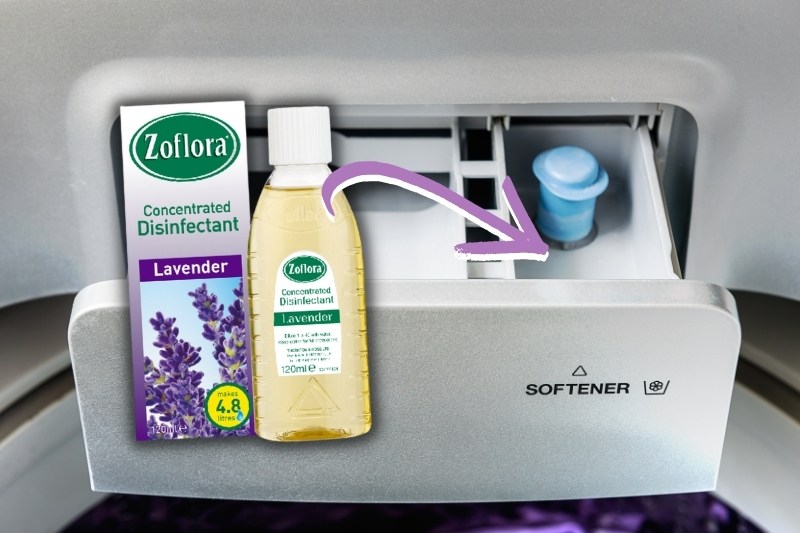
Available in a range of pleasant fragrances, Zoflora is a popular and highly concentrated disinfectant that can be used to kill bacteria and viruses on surfaces and clothes.
In fact, adding just 1 cap of it to the rinse cycle is enough to leave your garments fresh and germ-free. Read our guide to using Zoflora in your washing machine for some tips.
Essential oil
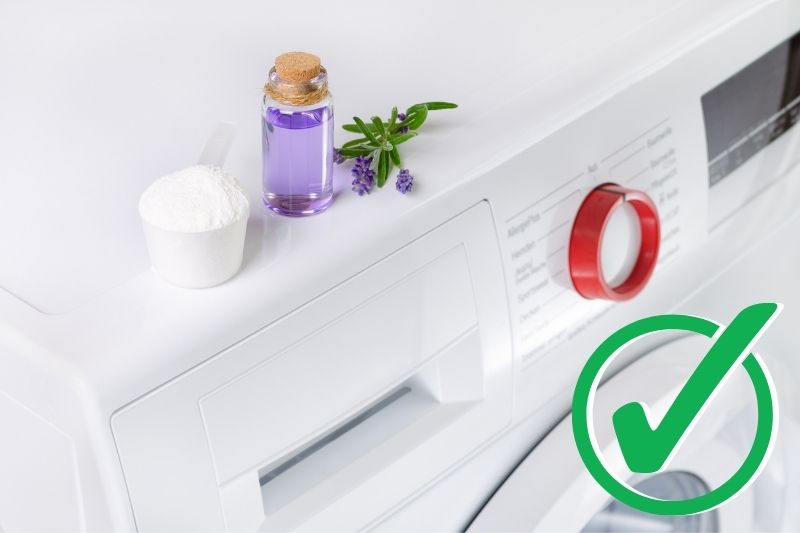
Just like vinegar, essential oils aren’t disinfectants. But many of them contain antibacterial or antimicrobial properties that can help you wave goodbye to germs.
Tea tree oil is one of the best, along with lavender, lemon, peppermint and eucalyptus.
All you need is 1-2 teaspoons of any one per wash to help break down bacteria and leave your clothes smelling amazing.
Just bear in mind that when using essential oils in laundry, you should select at least a 40°C cycle to make sure there is no oil leftover after the wash.
This is key if the items are going in the tumble dryer afterwards, as some oils pose a fire risk at high temperatures.
Otherwise, you can line dry your clothes and make the most of the sun’s naturally anti-bacterial UV rays.

A proud Yorkshire lass with a love for movies, music and cosy nights in! Once a self-confessed avoider of cleaning, she’s always on the lookout for new ways to make household chores as quick and simple as possible.
